jeudi, 15 juin 2023
Nietzsche et les Grecs : une compilation de l'Institut italien d'études philosophiques
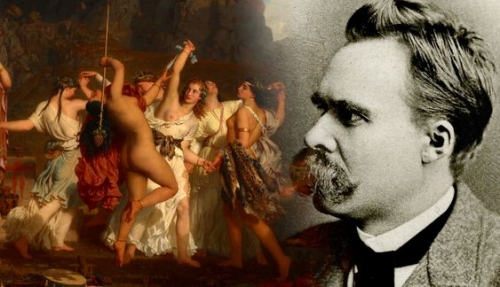
Nietzsche et les Grecs: une compilation de l'Institut italien d'études philosophiques
Giovanni Sessa
Source: https://www.paginefilosofali.it/nietzsche-e-i-greci-una-silloge-dellistituto-italiano-per-gli-studi-filosofici-giovanni-sessa/
L'expérience spéculative et existentielle de Friedrich Nietzsche représente un tournant dans l'histoire de la pensée européenne, distinguant deux époques différentes de la philosophie : avant Nietzsche et après lui. Cette affirmation est confirmée dans l'ouvrage Nietzsche e i Greci. Tra mito e disincanto (Nietzsche et les Grecs. Entre mythe et désenchantement), actuellement dans les librairies d'Italie grâce aux presses de l'Istituto Italiano per gli Studi Filosofici-Scuola di Pitagora (pp. 175, euro 18.00), édité par Ludovica Boi. Le volume rassemble une série de contributions sur le thème "Nietzsche et les Grecs", élaborées au cours de deux journées d'étude qui se sont tenues les 21 et 22 octobre 2019 dans les locaux de l'Institut au Palazzo Serra di Cassano à Naples. Il s'agissait de réunions et de séminaires organisées dans le cadre du projet "Les Grecs au miroir des Modernes". Le livre se compose de deux parties, chacune contenant trois essais. La préface est signée par Francesco Fronterotta, tandis que l'introduction est signée par l'éditeur.
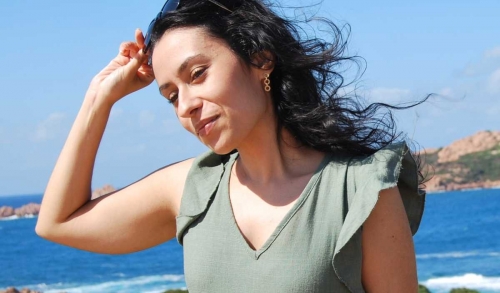

L'idée centrale, qui traverse tous les essais, est l'existence d'une continuité philologique-philosophique substantielle dans le parcours du penseur de Röcken. Ludovica Boi note que "s'il est indéniable que Nietzsche n'a jamais fait l'éloge de la méthode historiciste [...], il est tout aussi vrai que l'habitus philologique s'est enraciné en lui dès ses jeunes années et ne l'a jamais abandonné" (p. 13). La philologie fut en effet l'instrument avec lequel le penseur de l'éternel retour donna de l'ordre à sa propre nature intuitive et géniale. Nietzsche l'a transformée en : "un savoir-faire d'orfèvre qui contrecarre l'accélération de la modernité tardive [...] avec ses lectures superficielles et hâtives" (p. 13). D'un point de vue général, la civilisation grecque s'est révélée être, pour le philosophe, un marqueur indispensable de sa propre recherche, un engagement intellectuel intensément vécu. Ces deux éléments doivent donc être dûment pris en compte par quiconque entreprend l'exégèse du parcours théorique de l'Allemand, qui ne peut être distingué en "phases" rigidement opposées, puisqu'il met en évidence des traits unitaires. Nietzsche, tout en voulant reproposer le modus vivendi hellénique, reste un moderne, où l'instance épistrophique se conjugue avec le désir de démythification. C'est autour de cette ambiguïté que les auteurs ont développé leur travail herméneutique.
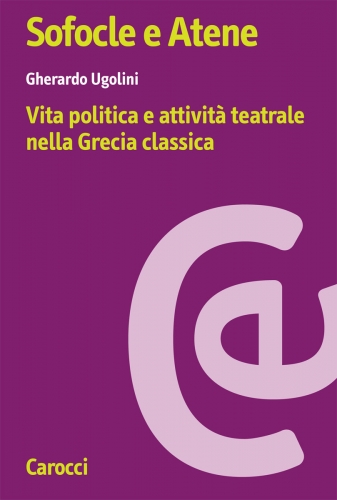
Gherardo Ugolini lit La naissance de la tragédie dans une perspective anti-aristotélicienne, en se concentrant notamment sur le décryptage de la "catharsis tragique". À ce sujet, les lectures de Lessing, Goethe et Bernays étaient pertinentes à l'époque. Le premier était porteur d'une exégèse "morale" de la catharsis, le second l'interprétait à la lumière de l'autonomie de l'esthétique, le troisième dans une clé "médico-pathologique". Nietzsche n'est pas convaincu de l'existence dans les représentations tragiques d'une libération "morale" et, reprenant le langage de Bernays, "ne croit pas du tout au potentiel thérapeutique inhérent à la tragédie" (p. 38). Il nie qu'il puisse y avoir une résolution "positive" de la condition tragique, la tragédie reproduisant l'extase dionysiaque. Dans la tragédie attique, le déchargement du dionysiaque, dont le chœur est témoin, dans le monde des images apolliniennes était évident. La seule catharsis possible était donc dans le dionysiaque : "compris comme la dissolution de l'identité et des catégories spatio-temporelles" (p. 43). Il est resté fidèle à cette conception jusqu'aux œuvres de sa maturité.
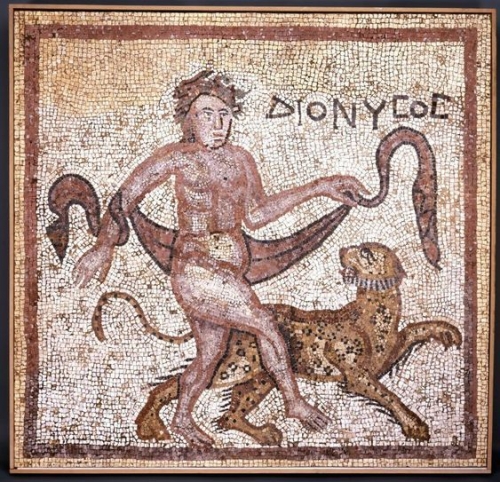
Dionysos, tel que saisi par Ludovica Boi, est le fil rouge omniprésent chez Nietzsche. Dans ses premiers écrits, il fait allusion à l'"unité essentielle" (Ur-eine), qui peut être expérimentée par le dépassement du principuum individiationis dans l'expérience extatique. Il la conçoit, en vertu de l'influence schopenhauerienne, en termes transcendantaux. Par la suite, grâce à la leçon tirée du préplatonisme et en particulier d'Héraclite, il s'approche de la coïncidentia oppositorum. Dans les écrits ultérieurs, ce sera précisément la réflexion sur le pouvoir de Dionysos qui déterminera dans sa vision la "dissolution de l'opposition du devenir et de la mort": "dissolution de l'opposition du devenir et de l'être, du moment et de l'éternité, du "monde vrai" et du "monde apparent"" (p. 50). À ce stade, l'"unité essentielle" sera expérimentée en termes de pure immanence, au-delà de tout dualisme ontologique et métaphysique. En conclusion, "Nietzsche radicalise les hypothèses déjà présentes dans la Geburt, en affirmant [...] une divinisation du devenir" (p. 51). Plus précisément, Dionysos symbolise la totalité de l'être ; il enseigne à l'humanité que la mort est liée à la vie. Pour l'auteur, ce dépassement du dualisme représente l'héritage le plus significatif du philosophe, qui réapparaîtra au 20ème siècle dans l'idéalisme magique de Deleuze, Klossowski et Evola.
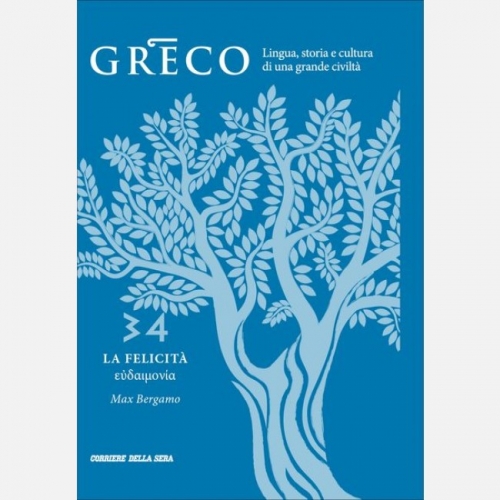
Max Bergamo traite du "caractère mixte" de Platon. Pour l'exégèse, il utilise des sources inédites telles que les notes du brillant élève de Nietzsche, Jakob Wackernagel. Par "caractère mixte", Nietzsche entend se référer à Platon, le lisant comme un philosophe chez qui l'écho de la sagesse hellénique archaïque pythagorico-heraclitéenne-socratique peut encore être entendu, présent même dans son choix de dialogue, par rapport auquel, en même temps, la spéculation de l'Athénien marque une rupture claire avec l'introduction du dualisme onto-gnoséologique. Le caractère "non original" de Platon aurait été déduit par Nietzsche à la lecture d'un passage de Diogène Laertius. Valeria Castagnini évoque la vie de l'érudit dans sa jeunesse : "exposant le lien entre le choix de la profession académique [...] et le tempérament du jeune Nietzsche" (p.16). On comprend comment, de cette manière, l'universitaire a fait sien un élément qualificatif de l'enseignement de Nietzsche, à savoir le rapport incontournable entre la vie et la pensée, l'existence et la science.
Edmondo Lisena aborde le rapport du philosophe avec les Grecs autour de l'"admirable année" 1875. À cette époque, le penseur était fermement convaincu que seule une pensée "impure" était capable de réagir face à l'illogisme de la réalité, à la dimension chaotique de la vie. Enfin, Andrea Orsucci exerce son analyse des pages de Umano, troppo umano (Humain, trop humain), en tenant compte de la crise des fondements de la connaissance qui se manifeste à la fin du 19ème siècle. La généalogie de l'esprit libre naîtra d'une confrontation étroite avec les développements de la science.
Un recueil extrêmement intéressant qui entre dans le cœur vital de la philosophie de Nietzsche : la potestas dionysiaque.
Giovanni Sessa
16:22 Publié dans Livre, Livre, Philosophie | Lien permanent | Commentaires (0) | Tags : livre, philosophie, nietzsche, friedrich nietzsche, hellénisme, dionysos |  |
|  del.icio.us |
del.icio.us |  |
|  Digg |
Digg | ![]() Facebook
Facebook
mardi, 18 janvier 2022
Julius Evola : "Dionysos et la voie de la main gauche"
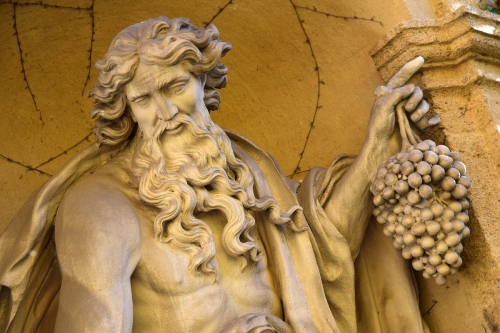
Julius Evola : "Dionysos et la voie de la main gauche"
Marco Maculotti
Ex: https://axismundi.blog/2018/12/23/j-evola-dioniso-e-la-via-della-mano-sinistra/?fbclid=IwAR3awl43I_tNJifaT-1Fl759n4g6OlN898WZHweGbn6KNkuaJgbn9PoT1TA
Evola considère le Dionysos de Nietzsche en relation avec la "Voie de la main gauche", un chemin initiatique qui implique "le courage d'arracher les voiles et les masques avec lesquels Apollon cache la réalité originelle, de transcender les formes pour entrer en contact avec la nature élémentaire d'un monde dans lequel le bien et le mal, le divin et l'humain, le rationnel et l'irrationnel, le juste et l'injuste n'ont plus de sens" (Julius Evola,
extrait de Ricognizioni. Uomini e problemi, chap. XII, pp. 79 - 85, Edizioni Mediterranee, Rome, 1985).
Comme le souligne l'exposé de l'une des œuvres les plus anciennes et les plus suggestives de Friedrich Nietzsche - La naissance de la tragédie - les concepts de Dionysos et d'Apollon ne correspondent guère à la signification que ces entités avaient dans l'Antiquité, en particulier dans une compréhension ésotérique de ceux-ci. Néanmoins, nous utiliserons ici l'hypothèse de Nietzsche à leur sujet comme point de départ, afin de définir des orientations existentielles fondamentales. Nous allons commencer par présenter un mythe.
Immergé dans la luminosité et la fabuleuse innocence de l'Eden, l'homme était béat et immortel. En lui s'épanouissait "l'arbre de vie" et il était lui-même cette vie lumineuse. Mais voici que surgit une vocation nouvelle, sans précédent : la volonté de dominer la vie, de vaincre l'être, pour acquérir le pouvoir sur l'être et le non-être, sur le Oui et sur le Non. On peut faire référence à "l'arbre du bien et du mal". Au nom de cela, l'homme se détache de l'arbre de la vie, ce qui entraîne l'effondrement de tout un monde, dans l'éclat d'une valeur qui révèle le royaume de celui qui, selon un dicton hermétique, est supérieur aux dieux eux-mêmes en ce qu'avec la nature immortelle, à laquelle ils sont liés, il a en son pouvoir aussi la nature mortelle, et donc avec l'infini aussi le fini, avec l'affirmation aussi la négation (cette condition a été marquée par l'expression "Seigneur des deux natures").
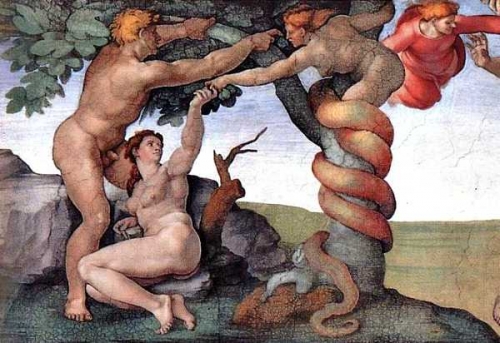
Mais l'homme n'était pas suffisamment fort pour commettre cet acte ; une terreur le saisit, par laquelle il fut accablé et brisé. Comme une lampe sous une lueur trop intense", dit un texte kabbalistique, "comme un circuit frappé par un potentiel trop élevé, les essences se sont fissurées. Il faut y rattacher la signification de la "chute" et de la "culpabilité" elle-même. Puis, déchaînées par cette terreur, les puissances spirituelles qui devaient être servies se sont immédiatement précipitées et figées sous la forme d'existences objectives autonomes et fatales. Soufferte, rendue extérieure et fugitive à elle-même, la puissance a pris l'aspect d'une existence objective autonome, et la liberté - sommet vertigineux qui devait établir la gloire d'un vivant super-divin - est devenue la contingence indomptable des phénomènes parmi lesquels l'homme erre, ombre tremblante et misérable de lui-même. On peut dire qu'il s'agit de la malédiction lancée par le "Dieu tué" contre celui qui était incapable d'assumer son héritage.
Avec Apollon, toujours compris en termes nietzschéens, se développe ce qui découle de cet échec. Dans sa fonction élémentaire, il doit être désigné comme la volonté qui se décharge, qui ne se vit plus comme volonté, mais comme "œil" et comme "forme" - comme vision, représentation, connaissance. Il est précisément le créateur du monde objectif, le fondement transcendantal de la "catégorie d'espace". L'espace, compris comme le mode d'être extérieur, comme ce par quoi les choses ne sont plus vécues en fonction de la volonté mais sous les espèces de l'image et de la visualité, est l'objectivation primordiale de la peur, du craquage et du déchargement de la volonté : transcendantalement, la vision d'une chose est la peur et la souffrance concernant cette chose. Et le "multiple", la divisibilité indéfinie propre à la forme spatiale reconfirme son sens, reflétant précisément la perte de tension, la désintégration de l'unité de l'acte absolu [1].
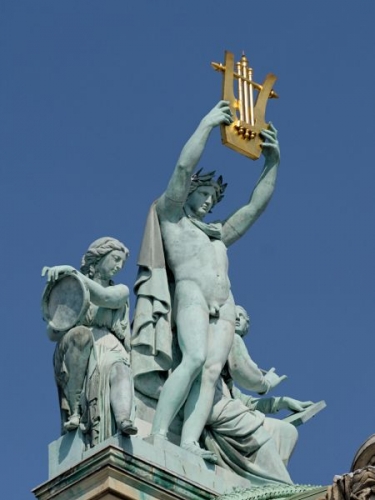
Mais de même que l'œil n'a pas conscience de lui-même, sinon en fonction de ce qu'il voit, de même l'être, rendu extérieur à lui-même par la fonction "apollinienne" de l'espace, est essentiellement dépendant, lié : c'est un être qui se soutient, qui tire sa propre consistance d'autre chose. Ce besoin d'appui génère la "catégorie de la limite": la tangibilité et la solidité des choses matérielles sont son incorporation, presque la syncope même de la peur qui arrête l'être insuffisant au bord du monde "dionysiaque". On pourrait donc l'appeler le "fait" de cette peur, dont l'espace est l'acte. Comme un cas particulier de la limite, nous avons la loi. Tandis que celui qui est de lui-même n'a pas peur de l'infini, du chaos, de ce que les Grecs appelaient l'apeiron, parce qu'en effet il y voit reflétée sa propre nature la plus profonde en tant qu'entité substantifiée par la liberté, celui qui échoue transcendantalement a horreur de l'infini, le fuit et cherche dans la loi, dans la constance des séquences causales, dans le prévisible et l'ordonné un substitut à cette certitude et à cette possession dont il est tombé. La science positive et toute la moralité pourraient, dans un certain sens, prendre une autre direction.
La troisième créature d'Apollo est la finalité. Pour un dieu, la finalité ne peut pas avoir de sens, puisqu'il n'a rien d'extérieur à lui-même - ni bon, ni vrai, ni rationnel, ni agréable, ni juste - dont il puisse tirer des normes et se mouvoir, mais le bon, le vrai, le rationnel, l'agréable et le juste sont identifiés à ce qu'il veut, simplement dans la mesure où il le veut. En termes philosophiques, on peut dire que la "raison suffisante" est l'affirmation elle-même.
En revanche, les êtres extérieurs à eux-mêmes ont besoin, pour agir, d'une corrélation, d'un motif d'action ou, pour mieux dire, de l'apparence, d'un motif d'action. En effet, dans des cas décisifs, en dehors de contextes banalement empiriques, l'homme ne veut pas quelque chose parce qu'il le trouve, par exemple, juste ou rationnel, mais il le trouve juste et rationnel simplement parce qu'il le veut (la psychanalyse elle-même a apporté des contributions valables à cet égard). Mais il a peur de descendre dans les profondeurs où la volonté ou l'impulsion s'affirment nues. Et voici que la prudence "apollinienne" préserve du vertige de quelque chose qui peut arriver sans avoir de cause et de but, c'est-à-dire uniquement pour lui-même, et selon le même mouvement avec lequel elle a libéré la volonté dans une visualité, elle fait maintenant apparaître les affirmations profondes, à travers les catégories de la "causalité" et de la soi-disant "raison suffisante", en fonction des buts, de l'utilité pratique, des motifs idéaux et moraux qui les justifient, sur lesquels elles reposent.
Ainsi, la vie entière de la grande masse des hommes prend le sens d'une fuite du centre, d'un désir d'étourdir et d'ignorer le feu qui brûle en eux et qu'ils ne peuvent supporter. Coupés de l'être, ils parlent, ils s'inquiètent, ils se cherchent, ils s'aiment et s'accouplent dans une demande mutuelle de confirmation. Ils multiplient leurs illusions et érigent ainsi une grande pyramide d'idoles : c'est la constitution de la société, de la morale, des idéaux, des buts métaphysiques, du royaume des dieux ou d'une providence apaisante, pour pallier l'inexistence d'une raison centrale, d'un sens fondamental. Autant de "points lumineux pour aider l'œil offensé à la perspective de devoir fixer d'horribles ténèbres" - pour reprendre les mots de Nietzsche.

Or l'autre - l'objet, la cause, la raison, etc. - n'existe pas en soi. - n'existant pas en soi, n'étant qu'une apparition symbolique de la déficience de la volonté en elle-même, avec l'acte dans lequel elle demande à un autre sa confirmation, en réalité elle ne va que confirmer sa propre déficience [2]. Ainsi l'homme erre, comme celui qui poursuit son ombre, éternellement assoiffé et éternellement déçu, créant et dévorant sans cesse des formes qui "sont et ne sont pas" (Plotin). Ainsi, la "solidité" des choses, la limite apollinienne, est ambiguë ; elle ne parvient pas à tenir et revient de façon récurrente à un point ultérieur par rapport à la consistance qu'elle semblait garantir et avec laquelle elle flattait le désir et le besoin. D'où, outre la catégorie de l'espace, la catégorie du temps, la loi d'un devenir des formes qui surgissent et se dissolvent - indéfiniment -, car pour un seul instant d'arrêt, pour un seul instant où il n'agirait pas, ne parlerait pas, ne désirerait pas, l'homme sentirait tout s'effondrer. Ainsi, sa sécurité parmi les choses, les formes et les idoles est aussi spectrale que celle d'un somnambule au bord d'un abîme (3).
Pourtant, ce monde n'est peut-être pas la dernière instance. En effet, puisqu'elle n'a pas de racine dans autre chose, puisque l'Ego seul en est responsable, et puisqu'elle a les causes en elle-même, elle a en principe la possibilité d'élaborer sa résolution. Ainsi est attestée une tradition concernant le grand Œuvre, la création d'un "second arbre de vie". C'est l'expression utilisée par Cesare della Riviera, dans son livre Il mondo magico degli Heroi (2e éd. Milan, 1605), où cette tâche est associée à la "magie" et en général à la tradition hermétique et magique. Mais dans ce contexte, il est intéressant de considérer ce qui est propre à la "voie de la main gauche". Il faut avoir le courage d'arracher les voiles et les masques avec lesquels "Apollon" cache la réalité originelle, de transcender les formes pour entrer en contact avec la nature élémentaire d'un monde dans lequel le bien et le mal, le divin et l'humain, le rationnel et l'irrationnel, le juste et l'injuste n'ont plus aucun sens.
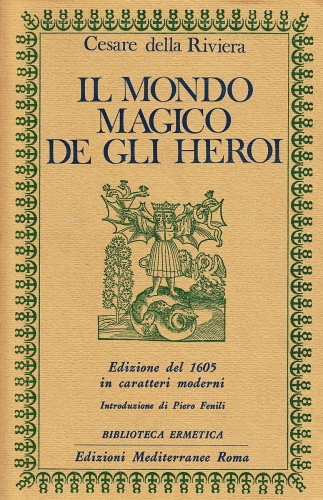
En même temps, il s'agit de savoir porter au sommet tout ce que la terreur originelle exaspère et que notre être naturaliste et instinctif ne veut pas ; de savoir briser la limite et creuser de plus en plus profond, en nourrissant la sensation d'un abîme vertigineux, et de se donner consistance, de se maintenir dans la transition, dans laquelle d'autres seraient rompus. D'où la possibilité d'établir un lien également avec le dionysisme historique, remettant en cause à cet égard non pas le dionysisme "mystique" et "orphique", mais le dionysisme thrace, qui présentait des aspects sauvages, orgiaques et destructeurs. Et si Dionysos se révèle dans les moments de crise et d'effondrement de la loi, alors la "culpabilité" peut aussi faire partie de ce champ existentiel ; en elle, le voile apollinien se déchire et, face à la force primordiale, l'homme joue le jeu de sa perdition ou de son devenir supérieur à la vie et à la mort. Il est intéressant de noter que le terme allemand pour le crime inclut le sens de briser (ver-brechen).
On peut continuer à qualifier un acte de coupable parce que c'est un acte dont on a peur, qu'on ne se sent pas du tout capable d'assumer, qu'on n'arrive pas à faire, qu'on juge inconsciemment comme quelque chose de trop fort pour nous. Mais la culpabilité active et positive a quelque chose de transcendant. Novalis a écrit : Quand l'homme a voulu devenir Dieu, il a péché, comme si c'était la condition. Dans les mystères de Mithra, la capacité de tuer ou d'assister impassiblement à un meurtre (même simulé) était un test d'initiation. Certains aspects des rites sacrificiels pourraient être ramenés au même contexte, lorsque la victime était identifiée à la même divinité, mais que le sacrifiant devait la terrasser pour que, supérieur à la malédiction et à la catastrophe, en lui - mais aussi dans la communauté qui convergeait magiquement vers lui - l'absolu puisse être libéré et transmis : transcendance dans le tragique du sacrifice et de la culpabilité.
Mais l'acte peut aussi être commis sur soi-même, dans certaines variétés de "mort initiatique". Faire violence à la vie elle-même, dans l'évocation de quelque chose d'élémentaire. Ainsi, la voie qui, dans certaines formes de yoga tantrique, ouvre sur la "kundalini" est appelée celle où "le feu de la mort éclate". L'acte tragique du sacrifiant est ici intériorisé et devient la pratique par laquelle la vie organique même, à sa racine, est privée de tout support, est suspendue et entraînée au-delà d'elle-même le long de la "Voie royale" de la sushumnâ, "dévoreuse de temps".
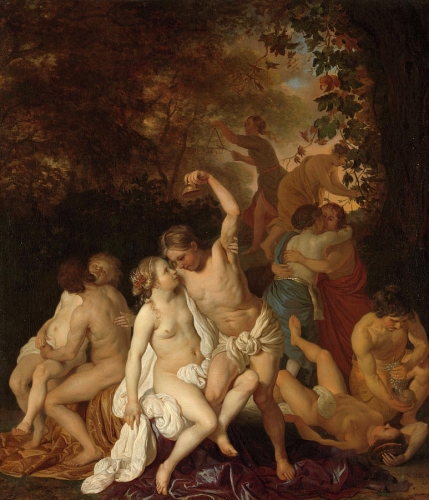
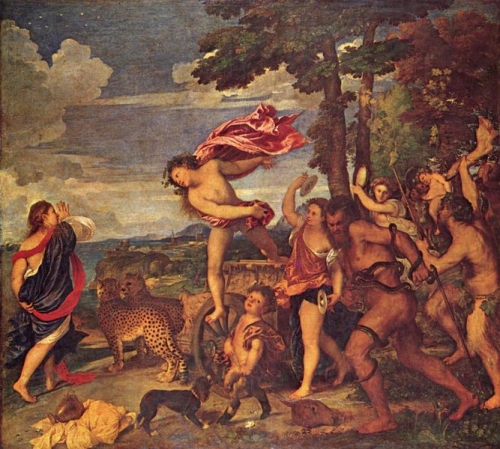
Il est bien connu qu'historiquement le dionysisme a pu s'associer à des formes de déchaînement frénétique, destructeur et orgiaque, comme dans le type classique de la bacchante et du baccante (Dionysos = Bacchus), de la ménade (maenad) et de la coribante. Mais il est ici difficile de séparer ce qui peut être rattaché aux expériences mentionnées ci-dessus des phénomènes de possession et d'invasion, surtout lorsqu'il ne s'agit pas de formes institutionnalisées liées à une tradition. Cependant, il faut toujours se rappeler que nous nous trouvons ici sur la ligne de la Via della Mano Sinistra, qui longe l'abîme, et la parcourir, dit-on dans certains textes, revient à longer le fil de l'épée. La condition préalable, tant dans le domaine de la vision (a-providentielle) de la vie, que de ces comportements, est la connaissance du mystère de la transformation du poison en médicament, qui constitue la plus haute forme d'alchimie.
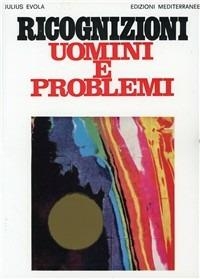 Notes :
Notes :
[1] Dans ce contexte, on peut rappeler la théorie d'Henri Bergson, qui explique l'espace précisément comme "le déroulement d'un geste", avec un processus inverse à celui par lequel les éléments multiples d'un élan sont rassemblés et fondus ensemble et dans une simplicité qualitative.
[2) Cela pourrait être associé au sens profond de la doctrine patristique, selon laquelle le corps, le véhicule matériel, a été créé au moment de la "chute" afin d'empêcher la chute ultérieure des âmes (cf. par exemple ORIGEN, De princip., I, 7, 5). Apollo est un dieu si prudent. En outre, pensez à une paralysie due à une frayeur : c'est comme une retraite, un rejet de l'ego, à cause duquel ce qui était dominé et compris organiquement comme un corps vivant et palpitant devient inerte, rigide, étranger. Le monde objectif est notre "grand corps" paralysé - gelé ou fixé par la condition de la limite, par la peur.
[3] Voir C. MICHELSTAEDTER, Persuasion et rhétorique, partie II et passim.
18:39 Publié dans Philosophie, Traditions | Lien permanent | Commentaires (0) | Tags : julius evola, philosophie, tradition, traditionalisme, apollon, dionysos, voie de la main gauiche |  |
|  del.icio.us |
del.icio.us |  |
|  Digg |
Digg | ![]() Facebook
Facebook
vendredi, 23 mars 2018
The Black Sun: Dionysus, Nietzsche, and Greek Myth
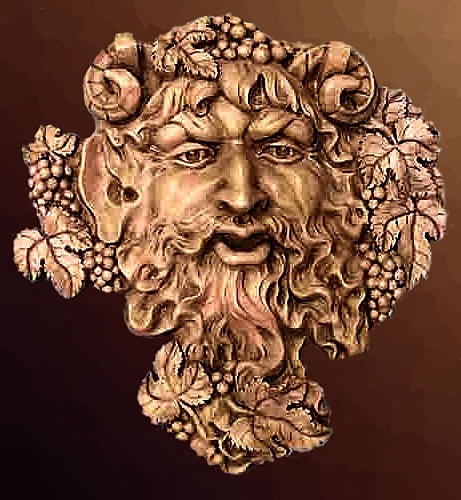
The Black Sun: Dionysus, Nietzsche, and Greek Myth
Gwendolyn Taunton
Ex: https://manticorepress.net
“Affirmation of life even it its strangest and sternest problems, the will to life rejoicing in its own inexhaustibility through the sacrifice of its highest types – that is what I call the Dionysian…Not so as to get rid of pity and terror, not so as to purify oneself of a dangerous emotion through its vehement discharge – it was thus Aristotle understood it – but, beyond pity and terror, to realize in oneself the eternal joy of becoming – that joy which also encompasses joy in destruction…And with that I again return to that place from which I set out –The Birth of Tragedy was my first revaluation of all values: with that I again plant myself in the soil out of which I draw all that I will and can – I, the last disciple of the philosopher Dionysus – I, the teacher of the eternal recurrence…(Nietzsche, “What I Owe to the Ancients”)
It is a well known fact that most of the early writings of the German philosopher, Friedrich Nietzsche, revolve around a prognosis of duality concerning the two Hellenic deities, Apollo and Dionysus. This dichotomy, which first appears in The Birth of Tragedy, is subsequently modified by Nietzsche in his later works so that the characteristics of the God Apollo are reflected and absorbed by his polar opposite, Dionysus. Though this topic has been examined frequently by philosophers, it has not been examined sufficiently in terms of its relation to the Greek myths which pertain to the two Gods in question. Certainly, Nietzsche was no stranger to Classical myth, for prior to composing his philosophical works, Nietzsche was a professor of Classical Philology at the University of Basel. This interest in mythology is also illustrated in his exploration of the use of mythology as tool by which to shape culture. The Birth of Tragedy is based upon Greek myth and literature, and also contains much of the groundwork upon which he would develop his later premises. Setting the tone at the very beginning of The Birth of Tragedy, Nietzsche writes:[spacer height=”20px”]
We shall have gained much for the science of aesthetics, once we perceive not merely by logical inference, but with the immediate certainty of vision, that the continuous development of art is bound up with the Apollonian and Dionysian duality – just as procreation depends on the duality of the sexes, involving perpetual strife with only periodically intervening reconciliations. The terms Dionysian and Apollonian we borrow from the Greeks, who disclose to the discerning mind the profound mysteries of their view of art, not, to be sure, in concepts, but in the intensely clear figures of their gods. Through Apollo and Dionysus, the two art deities of the Greeks, we come to recognize that in the Greek world there existed a tremendous opposition…[1]
Initially then, Nietzsche’s theory concerning Apollo and Dionysus was primarily concerned with aesthetic theory, a theory which he would later expand to a position of predominance at the heart of his philosophy. Since Nietzsche chose the science of aesthetics as the starting point for his ideas, it is also the point at which we shall begin the comparison of his philosophy with the Hellenic Tradition.
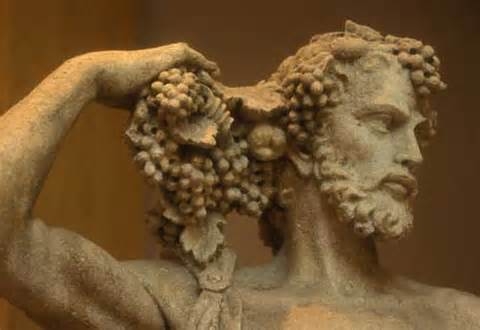
The opposition between Apollo and Dionysus is one of the core themes within The Birth of Tragedy, but in Nietzsche’s later works, Apollo is mentioned only sporadically, if at all, and his figure appears to have been totally superseded by his rival Dionysus. In The Birth of Tragedy, Apollo and Dionysus are clearly defined by Nietzsche, and the spheres of their influence are carefully demarcated. In Nietzsche’s later writings, Apollo is conspicuous by the virtue of his absence – Dionysus remains and has ascended to a position of prominence in Nietzsche’s philosophy, but Apollo, who was an integral part of the dichotomy featured in The Birth of Tragedy, has disappeared, almost without a trace. There is in fact, a simple reason for the disappearance of Apollo – he is in fact still present, within the figure of Dionysus. What begins in The Birth of Tragedy as a dichotomy shifts to synthesis in Nietzsche’s later works, with the name Dionysus being used to refer to the unified aspect of both Apollo and Dionysus, in what Nietzsche believes to the ultimate manifestation of both deities. In early works the synthesis between Apollo & Dionysus is incomplete – they are still two opposing principles – “Thus in The Birth of Tragedy, Apollo, the god of light, beauty and harmony is in opposition to Dionysian drunkenness and chaos”.[2] The fraternal union of Apollo & Dionysus that forms the basis of Nietzsche’s view is, according to him, symbolized in art, and specifically in Greek tragedy.[3] Greek tragedy, by its fusion of dialogue and chorus; image and music, exhibits for Nietzsche the union of the Apollonian and Dionysian, a union in which Dionysian passion and dithyrambic madness merge with Apollonian measure and lucidity, and original chaos and pessimism are overcome in a tragic attitude that is affirmative and heroic.[4]
The moment of Dionysian “terror” arrives when […] a cognitive failure or wandering occurs, when the principle of individuation, which is Apollo’s “collapses” […] and gives way to another perception, to a contradiction of appearances and perhaps even to their defeasibility as such (their “exception”). It occurs “when [one] suddenly loses faith in […] the cognitive form of phenomena. Just as dreams […] satisfy profoundly our innermost being, our common [deepest] ground [der gemeinsame Untergrund], so too, symmetrically, do “terror” and “blissful” ecstasy…well up from the innermost depths [Grunde] of man once the strict controls of the Apollonian principle relax. Then “we steal a glimpse into the nature of the Dionysian”.[5]
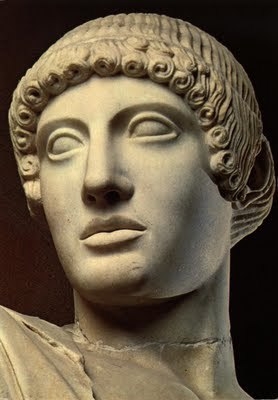 The Apollonian and the Dionysian are two cognitive states in which art appears as the power of nature in man.[6] Art for Nietzsche is fundamentally not an expression of culture, but is what Heidegger calls “eine Gestaltung des Willens zur Macht” a manifestation of the will to power. And since the will to power is the essence of being itself, art becomes “die Gestaltung des Seienden in Ganzen,” a manifestation of being as a whole.[7] This concept of the artist as a creator, and of the aspect of the creative process as the manifestation of the will, is a key component of much of Nietzsche’s thought – it is the artist, the creator who diligently scribes the new value tables. Taking this into accord, we must also allow for the possibility that Thus Spake Zarathustra opens the doors for a new form of artist, who rather than working with paint or clay, instead provides the Uebermensch, the artist that etches their social vision on the canvas of humanity itself. It is in the character of the Uebermensch that we see the unification of the Dionysian (instinct) and Apollonian (intellect) as the manifestation of the will to power, to which Nietzsche also attributes the following tautological value “The Will to Truth is the Will to Power”.[8] This statement can be interpreted as meaning that by attributing the will to instinct, truth exists as a naturally occurring phenomena – it exists independently of the intellect, which permits many different interpretations of the truth in its primordial state. The truth lies primarily in the will, the subconscious, and the original raw instinctual state that Nietzsche identified with Dionysus. In The Gay Science Nietzsche says:
The Apollonian and the Dionysian are two cognitive states in which art appears as the power of nature in man.[6] Art for Nietzsche is fundamentally not an expression of culture, but is what Heidegger calls “eine Gestaltung des Willens zur Macht” a manifestation of the will to power. And since the will to power is the essence of being itself, art becomes “die Gestaltung des Seienden in Ganzen,” a manifestation of being as a whole.[7] This concept of the artist as a creator, and of the aspect of the creative process as the manifestation of the will, is a key component of much of Nietzsche’s thought – it is the artist, the creator who diligently scribes the new value tables. Taking this into accord, we must also allow for the possibility that Thus Spake Zarathustra opens the doors for a new form of artist, who rather than working with paint or clay, instead provides the Uebermensch, the artist that etches their social vision on the canvas of humanity itself. It is in the character of the Uebermensch that we see the unification of the Dionysian (instinct) and Apollonian (intellect) as the manifestation of the will to power, to which Nietzsche also attributes the following tautological value “The Will to Truth is the Will to Power”.[8] This statement can be interpreted as meaning that by attributing the will to instinct, truth exists as a naturally occurring phenomena – it exists independently of the intellect, which permits many different interpretations of the truth in its primordial state. The truth lies primarily in the will, the subconscious, and the original raw instinctual state that Nietzsche identified with Dionysus. In The Gay Science Nietzsche says:
For the longest time, thinking was considered as only conscious, only now do we discover the truth that the greatest part of our intellectual activity lies in the unconscious […] theories of Schopenhauer and his teaching of the primacy of the will over the intellect. The unconscious becomes a source of wisdom and knowledge that can reach into the fundamental aspects of human existence, while the intellect is held to be an abstracting and falsifying mechanism that is directed, not toward truth but toward “mastery and possession.” [9]
Thus the will to power originates not in the conscious, but in the subconscious. Returning to the proposed dichotomy betwixt Dionysus and Apollo, in his later works the two creative impulses become increasingly merged, eventually reaching a point in his philosophy wherein Dionysus refers not to the singular God, but rather a syncretism of Apollo and Dionysus in equal quantity. “The two art drives must unfold their powers in a strict proportion, according to the law of eternal justice.”[10] For Nietzsche, the highest goal of tragedy is achieved in the harmony between two radically distinct realms of art, between the principles that govern the Apollonian plastic arts and epic poetry and those that govern the Dionysian art of music.[11] To be complete and to derive ultimate mastery from the creative process, one must harness both the impulses represented by Apollo and Dionysus – the instinctual urge and potent creative power of Dionysus, coupled with the skill and intellectualism of Apollo’s craftsmanship – in sum both natural creative power from the will and the skills learnt within a social grouping. This definition will hold true for all creative ventures and is not restricted to the artistic process; ‘will’ and ‘skill’ need to act in harmony and concord.
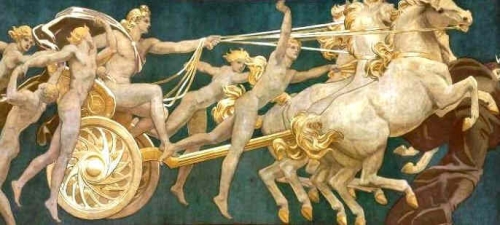
In Nietzsche’s philosophy, Apollo and Dionysus are so closely entwined as to render them inseparable. Apollo, as the principle of appearance and of individuation, is that which grants appearance to the Dionysian form, without for Apollo, Dionysus remains bereft of physical appearance.
That [Dionysus] appears at all with such epic precision and clarity is the work of the dream interpreter, Apollo […] His appearances are at best instances of “typical ‘ideality,’” epiphanies of the “idea” or “idol”, mere masks and after images (Abbilde[er]). To “appear” Dionysus must take on a form.[12]
In his natural state, Dionysus has no form, it is only by reflux with Apollo, who represents the nature of form that Dionysus, as the nature of the formless, can appear to us at all. Likewise, Apollo without Dionysus becomes lost in a world of form – the complex levels of abstraction derived from the Dionysian impulse are absent. Neither god can function effectively without the workings of the other. Dionysus appears, after all, only thanks to the Apollonian principle. This is Nietzsche’s rendition of Apollo and Dionysus, his reworking of the Hellenic mythos, forged into a powerful philosophy that has influenced much of the modern era. Yet how close is this new interpretation to the original mythology of the ancient Greeks, and how much of this is Nietzsche’s own creation? It is well known that Nietzsche and his contemporary Wagner both saw the merit in reshaping old myths to create new socio-political values. To fully understand Nietzsche’s retelling of the Dionysus myth and separate the modern ideas from that of the ancients, we need to examine the Hellenic sources on Dionysus.
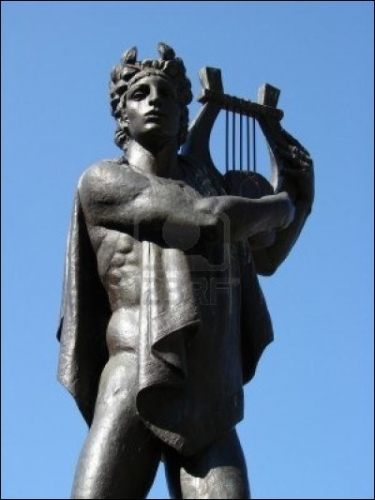 Myths of Dionysus are often used to depict a stranger or an outsider to the community as a repository for the mysterious and prohibited features of another culture. Unsavory characteristics that the Greeks tend to ascribe to foreigners are attributed to him, and various myths depict his initial rejection by the authority of the polis – yet Dionysus’ birth at Thebes, as well as the appearance of his name on Linear B tablets, indicates that this is no stranger, but in fact a native, and that the rejected foreign characteristics ascribed to him are in fact Greek characteristics.[13] Rather than being a representative of foreign culture what we are in fact observing in the character of Dionysus is the archetype of the outsider; someone who sits outside the boundaries of the cultural norm, or who represents the disruptive element in society which either by its nature effects a change or is removed by the culture which its very presence threatens to alter. Dionysus represents as Plutarch observed, “the whole wet element” in nature – blood, semen, sap, wine, and all the life giving juice. He is in fact a synthesis of both chaos and form, of orgiastic impulses and visionary states – at one with the life of nature and its eternal cycle of birth and death, of destruction and creation.[14] This disruptive element, by being associated with the blood, semen, sap, and wine is an obvious metaphor for the vital force itself, the wet element, being representative of “life in the raw”. This notion of “life” is intricately interwoven into the figure of Dionysus in the esoteric understanding of his cult, and indeed throughout the philosophy of the Greeks themselves, who had two different words for life, both possessing the same root as Vita (Latin: Life) but present in very different phonetic forms: bios and zoë.[15]
Myths of Dionysus are often used to depict a stranger or an outsider to the community as a repository for the mysterious and prohibited features of another culture. Unsavory characteristics that the Greeks tend to ascribe to foreigners are attributed to him, and various myths depict his initial rejection by the authority of the polis – yet Dionysus’ birth at Thebes, as well as the appearance of his name on Linear B tablets, indicates that this is no stranger, but in fact a native, and that the rejected foreign characteristics ascribed to him are in fact Greek characteristics.[13] Rather than being a representative of foreign culture what we are in fact observing in the character of Dionysus is the archetype of the outsider; someone who sits outside the boundaries of the cultural norm, or who represents the disruptive element in society which either by its nature effects a change or is removed by the culture which its very presence threatens to alter. Dionysus represents as Plutarch observed, “the whole wet element” in nature – blood, semen, sap, wine, and all the life giving juice. He is in fact a synthesis of both chaos and form, of orgiastic impulses and visionary states – at one with the life of nature and its eternal cycle of birth and death, of destruction and creation.[14] This disruptive element, by being associated with the blood, semen, sap, and wine is an obvious metaphor for the vital force itself, the wet element, being representative of “life in the raw”. This notion of “life” is intricately interwoven into the figure of Dionysus in the esoteric understanding of his cult, and indeed throughout the philosophy of the Greeks themselves, who had two different words for life, both possessing the same root as Vita (Latin: Life) but present in very different phonetic forms: bios and zoë.[15]
Plotinos called zoë the “time of the soul”, during which the soul, in its course of rebirths, moves on from one bios to another […] the Greeks clung to a not-characterized “life” that underlies every bios and stands in a very different relationship to death than does a “life” that includes death among its characteristics […] This experience differs from the sum of experiences that constitute the bios, the content of each individual man’s written or unwritten biography. The experience of life without characterization – of precisely that life which “resounded” for the Greeks in the word zoë – is, on the other hand, indescribable.[16]
Zoë is Life in its immortal and transcendent aspect, and is thus representative of the pure primordial state. Zoëis the presupposition of the death drive; death exists only in relation to zoë. It is a product of life in accordance with a dialectic that is a process not of thought, but of life itself, of the zoë in each individual bios.[17]
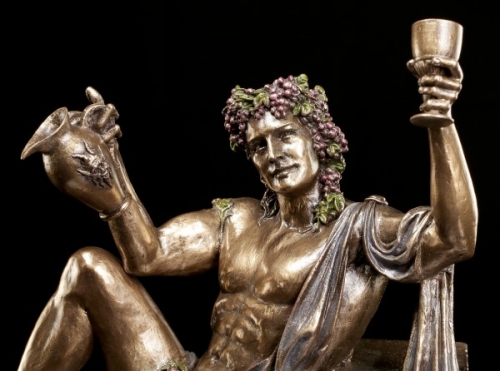
The other primary association of Dionysus is with the chthonic elements, and we frequently find him taking the form of snakes. According to the myth of his dismemberment by the Titans, a myth which is strongly associated with Delphi, he was born of Persephone, after Zeus, taking snake form, had impregnated her. [18] In Euripides Bacchae, Dionysus, being the son of Semele, is a god of dark and frightening subterranean powers; yet being also the son of Zeus, he mediates between the chthonic and civilized worlds, once again playing the role of a liminal outsider that passes in transit from one domain to another.[19] Through his association with natural forces, a description of his temple has been left to us by a physician from Thasos: “A temple in the open air, an open air naos with an altar and a cradle of vine branches; a fine lair, always green; and for the initiates a room in which to sing the evoe.”[20] This stands in direct contrast to Apollo, who was represented by architectural and artificial beauty. Likewise his music was radically different to that of Apollo’s; “A stranger, he should be admitted into the city, for his music is varied, not distant and monotone like the tunes of Apollo’s golden lyre”. (Euripides Bacchae 126-134, 155-156)[21]
Both Gods were concerned with the imagery of life, art, and as we shall see soon, the sun. Moreover, though their forces were essentially opposite, they two Gods were essentially representative of two polarities for the same force, meeting occasionally in perfect balance to reveal an unfolding Hegelian dialectic that was the creative process of life itself and the esoteric nature of the solar path, for just as Dionysus was the chthonic deity (and here we intentionally use the word Chthon instead of the word Gē – Chthon being literally underworld and Gē being the earth or ground) and Apollo was a Solar deity; but not the physical aspect of the sun as a heavenly body, this was ascribed by to the god Helios instead. Rather Apollo represented the human aspect of the solar path (and in this he is equivalent to the Vedic deity Savitar), and its application to the mortal realm; rather than being the light of the sky, Apollo is the light of the mind: intellect and creation. He is as bright as Dionysus is dark – in Dionysus the instinct, the natural force of zoë is prevalent, associated with the chthonic world below ground because he is immortal, his power normally unseen. He rules during Apollo’s absence in Hyperborea because the sun has passed to another land, the reign of the bright sun has passed and the time of the black sun commences – the black sun being the hidden aspect of the solar path, represented by the departure of Apollo in this myth.
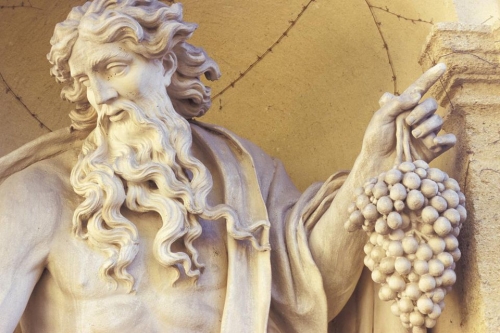
Apollo is frequently mentioned in connection to Dionysus in Greek myth. Inscriptions dating from the third century B.C., mention that Dionysos Kadmeios reigned alongside Apollo over the assembly of Theben gods.[22] Likewise on Rhodes a holiday called Sminthia was celebrated there in memory of a time mice attacked the vines there and were destroyed by Apollo and Dionysus, who shared the epithet Sminthios on the island.[23] They are even cited together in the Odyssey (XI 312-25), and also in the story of the death of Koronis, who was shot by Artemis, and this at Apollo’s instigation because she had betrayed the god with a mortal lover.[24] Also, the twin peaks on Parnassos traditionally known as the “peaks of Apollo and Dionysus.”[25] Their association and worship however, was even more closely entwined at Delphi, for as Leicester Holland has perceived:
(1) Dionysus spoke oracles at Delphi before Apollo did; (2) his bones were placed in a basin beside the tripod; (3) the omphalos was his tomb. It is well known, moreover, that Dionysus was second only to Apollo in Delphian and Parnassian worship; Plutarch, in fact, assigns to Dionysus an equal share with Apollo in Delphi[26]
A Pindaric Scholiast says that Python ruled the prophetic tripod on which Dionysus was the first to speak oracles; that then Apollo killed the snake and took over.[27] The association of Apollo and Dionysus in Delphi, moreover, was not limited to their connection to the Delphic Oracle. We also find this relationship echoed in the commemoration of the Great flood which was celebrated each year at a Delphian festival called Aiglē, celebrated two or three days before the full moon of January or February, at the same time as the Athenian Anthesteria festival, the last day of which was devoted to commemorating the victims of the Great Flood; this was the same time of the year when Apollo was believed at Delphi to return from his sojourn among the Hyperboreans. Moreover, Dionysus is said to have perished and returned to life in the flood.[28] Apollo’s Hyperborean absence is his yearly death – Apollonios says that Apollo shed tears when he went to the Hyperborean land; thence flows the Eridanos, on whose banks the Heliades wail without cease; and extremely low spirits came over the Argonauts as they sailed that river of amber tears.[29]
This is the time of Dionysus’ reign at Delphi in which he was the center of Delphic worship for the three winter months, when Apollo was absent. Plutarch, himself a priest of the Pythian Apollo, Amphictyonic official and a frequent visitor to Delphi, says that for nine months the paean was sung in Apollo’s honour at sacrifices, but at the beginning of winter the paeans suddenly ceased, then for three months men sang dithyrambs and addressed themselves to Dionysus rather than to Apollo.[30] Chthonian Dionysus manifested himself especially at the winter festival when the souls of the dead rose to walk briefly in the upper world again, in the festival that the Athenians called Anthesteria, whose Delphian counterpart was the Theophania. The Theophania marked the end of Dionysus’ reign and Apollo’s return; Dionysus and the ghosts descended once more to Hades realm.[31] In this immortal aspect Dionysus is very far removed from being a god of the dead and winter; representing instead immortal life, the zoë, which was employed in Dionysian cult to release psychosomatic energies summoned from the depths that were discharged in a physical cult of life.[32]
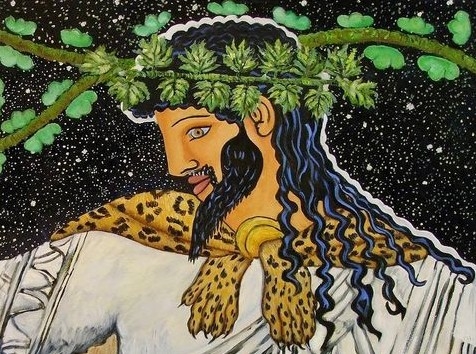
Dionysus is the depiction of transcendent primordial life, life that persists even during the absence of Apollo (the Sun) – for as much as Apollo is the Golden Sun, Dionysus is the Black or Winter Sun, reigning in the world below ground whilst Apollo’s presence departs for another hemisphere, dead to the people of Delphi, the Winter Sun reigns in Apollo’s absence. Far from being antagonistic opposites, Apollo and Dionysus were so closely related in Greek myth that according to Deinarchos, Dionysus was killed and buried at Delphi beside the golden Apollo.[33] Likewise, in the Lykourgos tetralogy of Aischylos, the cry “Ivy-Apollo, Bakchios, the soothsayer,” is heard when the Thracian bacchantes, the Bassarai, attacks Orpheus, the worshipper of Apollo and the sun. The cry suggests a higher knowledge of the connection between Apollo and Dionysus, the dark god, whom Orpheus denies in favour of the luminous god. In the Lykymnios of Euripides the same connection is attested by the cry, “Lord, laurel-loving Bakchios, Paean Apollo, player of the Lyre.”[34] Similarly, we find anotherpaean by Philodamos addressed to Dionysus from Delphi: “Come hither, Lord Dithyrambos, Backchos…..Bromios now in the spring’s holy period.”[35] The pediments of the temple of Apollo also portray on one side Apollo with Leto, Artemis, and the Muses, and on the other side Dionysus and the thyiads, and a vase painting of c.400 B.C. shows Apollo and Dionysus in Delphi holding their hands to one another.[36]
An analysis of Nietzsche’s philosophy concerning the role of Apollo and Dionysus in Hellenic myth thus reveals more than even a direct parallel. Not only did Nietzsche comprehend the nature of the opposition between Apollo and Dionysus, he understood this aspect of their cult on the esoteric level, that their forces, rather than being antagonistic are instead complementary, with both Gods performing two different aesthetic techniques in the service of the same social function, which reaches its pinnacle of development when both creative processes are elevated in tandem within an individual. Nietzsche understood the symbolism of myths and literature concerning the two gods, and he actually elaborated upon it, adding the works of Schopenhauer to create a complex philosophy concerning not only the interplay of aesthetics in the role of the creative process, but also the nature of the will and the psychological process used to create a certain type, which is exemplified in both his ideals of the Ubermensch and the Free Spirit. Both of these higher types derive their impetus from the synchronicity of the Dionysian and Apollonian drives, hence why in Nietzsche’s later works following The Birth of Tragedy only the Dionysian impulse is referred to, this term not being used to signify just Dionysus, but rather the balanced integration of the two forces. This ideal of eternal life (zoë) is also located in Nietzsche’s theory of Eternal Reoccurrence – it denies the timeless eternity of a supernatural God, but affirms the eternity of the ever-creating and destroying powers in nature and man, for like the solar symbolism of Apollo and Dionysus, it is a notion of cyclical time. To Nietzsche, the figure of Dionysus is the supreme affirmation of life, the instinct and the will to power, with the will to power being an expression of the will to life and to truth at its highest exaltation – “It is a Dionysian Yea-Saying to the world as it is, without deduction, exception and selection…it is the highest attitude that a philosopher can reach; to stand Dionysiacally toward existence: my formula for this is amor fati”’[37] Dionysus is thus to both Nietzsche and the Greeks, the highest expression of Life in its primordial and transcendent meaning, the hidden power of the Black Sun and the subconscious impulse of the will.
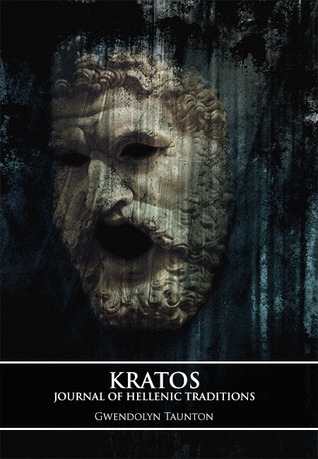
To order at: https://manticorepress.net
Endnotes:
[1]James I. Porter, The Invention of Dionysus: An Essay on the Birth of Tragedy, (California: Stanford University Press, 2002), 40
[2]Rose Pfeffer, Nietzsche: Disciple of Dionysus, (New Jersey: Associated University Presses, Inc. 1977), 31
[3] Ibid.,31
[4] Ibid., 51
[5] James I. Porter, The Invention of Dionysus: An Essay on the Birth of Tragedy, 50-51
[6] Ibid., 221
[7] Ibid., 205-206
[8] Rose Pfeffer, Nietzsche: Disciple of Dionysus, 114
[9] Ibid, 113
[10] James I. Porter, The Invention of Dionysus: An Essay on the Birth of Tragedy, 82
[11] Rose Pfeffer, Nietzsche: Disciple of Dionysus, 32
[12] James I. Porter, The Invention of Dionysus: An Essay on the Birth of Tragedy, 99
[13]Dora C. Pozzi, and John M. Wickerman, Myth & the Polis, (New York: Cornell University 1991), 36
[14]Rose Pfeffer, Nietzsche: Disciple of Dionysus, 126
[15] Carl Kerényi, Dionysos Archetypal Image of Indestructible Life, (New Jersey: Princeton university press, 1996), xxxxi
[16] Ibid., xxxxv
[17] Ibid., 204-205
[18] Joseph Fontenrose, Python: A Study of Delphic Myth and its Origins (Berkeley: University of California Press, 1980), 378
[19]Dora C. Pozzi, and John M. Wickerman, Myth & the Polis, 147
[20]Marcel Detienne, trans. Arthur Goldhammer Dionysos At Large, (London: Harvard Univeristy Press 1989), 46
[21]Dora C. Pozzi, and John M. Wickerman, Myth & the Polis, 144
[22] Marcel Detienne, trans. Arthur Goldhammer Dionysos At Large, 18
[23] Daniel E. Gershenson, Apollo the Wolf-God in Journal of Indo-European Studies, Mongraph number 8 (Virginia: Institute for the Study of Man 1991), 32
[24]Carl Kerényi, Dionysos Archetypal Image of Indestructible Life, (New Jersey: Princeton university press, 1996), 103
[25] Dora C. Pozzi, and John M. Wickerman, Myth & the Polis, 139
[26] Joseph Fontenrose, Python: A Study of Delphic Myth and its Origins (Berkeley: University of California Press, 1980), 375
[27] Ibid., 376
[28]Daniel E. Gershenson, Apollo the Wolf-God in Journal of Indo-European Studies, Monograph number 8, 61
[29] Joseph Fontenrose, Python: A Study of Delphic Myth and its Origins (Berkeley: University of California Press, 1980), 387
[30] Ibid., 379
[31] Ibid., 380-381
[32] Ibid., 219
[33] Ibid., 388
[34] Carl Kerényi, Dionysos Archetypal Image of Indestructible Life, (New Jersey: Princeton university press, 1996), 233
[35] Ibid.,217
[36] Walter F. Otto, Dionysus: Myth and Cult, (Dallas: Spring Publications, 1989) 203
[37] Rose Pfeffer, Nietzsche: Disciple of Dionysus, 261
00:11 Publié dans Philosophie, Traditions | Lien permanent | Commentaires (0) | Tags : gwendolyn taunton, traditions, mythologie, mythologie grecque, grèce antique, nietzsche, dionysos, apollon, hellénisme, humanités greco-latines |  |
|  del.icio.us |
del.icio.us |  |
|  Digg |
Digg | ![]() Facebook
Facebook
mardi, 08 novembre 2011
La Germania dionisiaca di Alfred Bäumler
00:05 Publié dans Philosophie, Révolution conservatrice | Lien permanent | Commentaires (0) | Tags : allemagne, nietzsche, alfred bäumler, révolution conservatrice, dionysisme, dionysos, philosophie |  |
|  del.icio.us |
del.icio.us |  |
|  Digg |
Digg | ![]() Facebook
Facebook
mardi, 14 avril 2009
Danses dionysiaques
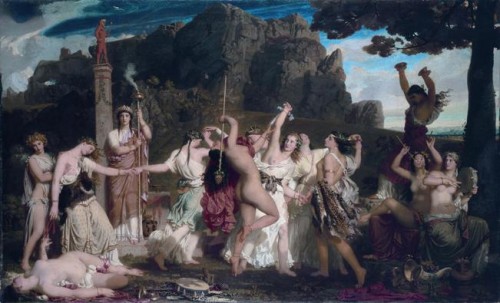
Archives de SYNERGIES EUROPEENNES - 1995
Danses dionysiaques
Une savante étude sur Les danses dionysiaques en Grèce Antique vient de paraître. Il s'agit de la troisième partie d'une thèse de doctorat soutenue par Marie-Hélène Delavaud- Roux en 1991 et dont les deux parties précédentes ont été publiées sous les titres de Les danses armées en Grèce Antique et de Les danses pacifiques en Grèce Antique. L'auteur écrit: «Dans ce qui suit, je donnerai aux qualificatifs des danses dionysiaques ou bachiques un sens très large. Il s'agit en fait d'un type de danse qui peut concerner d'autres divinités que Dionysos —Déméter, Cybèle et Adonis. Nous prenons donc les mots “dionysiaque” et “bachique” dans le sens d'“orgiaque”, par opposition aux manifestations orchestiques armées et pacifiques. Dans cette étude, nous engloberons aussi bien les danses liées à l'extase que celles liées à l'ivresse. Les premières semblent féminines, tandis que les secondes paraissent plutôt masculines. Cependant, nous verrons que les hommes peuvent dans certains cas effectuer des danses mystiques, rappelant les danses des derviches tourneurs». Le livre est abondamment illustré de dessins figurant sur les céramiques grecques. Il permettra à certains une approche intéressante des musiques traditionnelles de ce pays. La Grèce est un des rares pays européens où les traditions musicales (entre autres) sont encore réellement vivantes. Pour les découvrir, il faut éviter les soirées “pour touristes”, se munir de l'excellent L'été grec de J. Lacarrière, et emprunter des chemins qui, parfois, ne mènent nulle part (JdB).
Marie-Hélène DELAVAUD-ROUX, Les danses dionysiaques en Grèce Antique, Publications de l'Université de Provence, 29 avenue Robert Schuman, F-13.621 Aix-en-Provence Cedex 1,1995, 256 p.,170 FF.
00:05 Publié dans Traditions | Lien permanent | Commentaires (0) | Tags : traditions, traditionalisme, antiquité grecque, mythologie, mythologie grecque, dionysos, bacchus, danses, chorégraphie, antiquité |  |
|  del.icio.us |
del.icio.us |  |
|  Digg |
Digg | ![]() Facebook
Facebook
samedi, 23 août 2008
Dionysische wijsheid
00:05 Publié dans Philosophie | Lien permanent | Commentaires (0) | Tags : dionysos, nietzsche, mythologie, dieux, antiquité grecque, grèce antique |  |
|  del.icio.us |
del.icio.us |  |
|  Digg |
Digg | ![]() Facebook
Facebook



